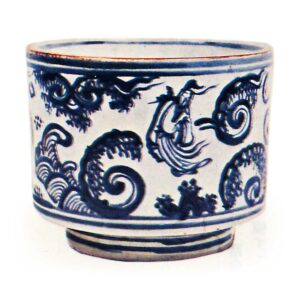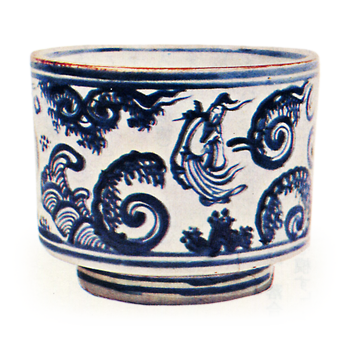
Kimiidera is a name given to excellent underglaze blue ware with a Kumodo pattern. The “Chanonmokurisho” says, “Kimiidera is the best of all dye-glaze porcelain, and is also called Kimiidera because it has a Kumodo pattern. However, Kimiidera is the second of the 33 temples in the western part of Japan. The tea ceremony “Do-sen-tei” says, “It began when Rikyu used an incense burner from Kimiidera for a tea bowl. The tea bowl is estimated to have been made in China, and is praised as a gem with three perfect qualities of ground, indigo color, and pattern. It had been in the Konoike family in Osaka since before the Manji period (1658-61). Before that, it passed through Rikyu to Tokugawa Ieyasu, and then to Tsuda Koheiji, but it again became a fixture of the Tokugawa shogunate, and was often used in shogunate tea ceremonies during the Genwa Kan’ei period (1615-44). However, there are different theories about its inscription. For example, according to “Chakki Meibutsu Zushu” (A Dictionary of Tea Ceremony Utensils), Kobori Enshu named it “Kimiidera” because the figure in the pattern resembles Kannon (the Goddess of Mercy). (Chaji Hiryoku, Chaji Meibinshu, Taisho Meikikan, Toki Shukai)


